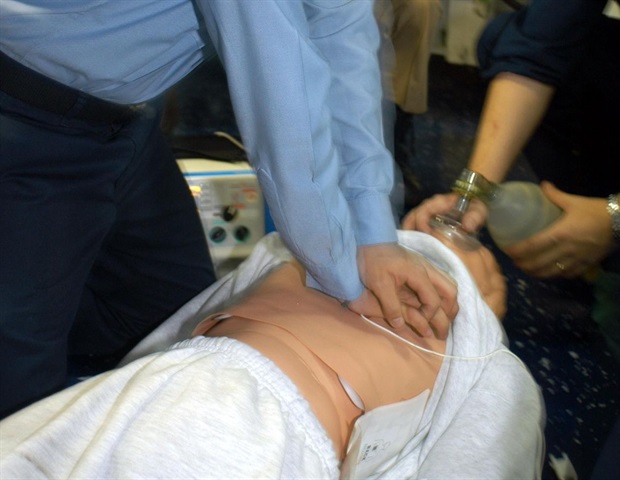Most cases of cardiac arrest during sport are likely to be preventable. In addition, the emergency response with cardiopulmonary resuscitation (CPR) and defibrillators within the sports context can be improved. This has been shown in a thesis from the University of Gothenburg.
Swedish ambulance services report around 6,000 cases of sudden cardiac arrest annually. These are people who are not hospitalized but fall ill at home, at work or in other contexts. Of these, around 400 are affected within the context of sport.
In a thesis at Sahlgrenska Academy at the University of Gothenburg, Matilda Frisk Torell, PhD student and Cardiologist, has taken a closer look at e.g., emergency assistance and prognoses for people who suffer sudden cardiac arrest during sports.
The chances of survival were found to be significantly better for sports-related cardiac arrest, especially if it occurred in a sports and training facility. In this group, survival 30 days after the event was 56%, compared with 12% for out-of-hospital cardiac arrest in general.
Late or no defibrillation
Early CPR and defibrillation with an automated external defibrillator, AED, are crucial, but it still took at least 10 minutes before an available AED was used. Despite the fact that a majority (73%) of those who suffered a cardiac arrest at a sports facility had an acute cardiac arrhythmia, known as ventricular fibrillation, where the defibrillator can be the difference between life and death, only 14% of the youngest, up to 35 years old, were connected to a public defibrillator before the ambulance arrived.
We have the opportunity to further increase survival rates if more sports facilities and other places where people play sports are equipped with public defibrillators and if more people learn to recognize cardiac arrest, know how to perform CPR and can use the defibrillator.”
Matilda Frisk Torell, PhD student and Cardiologist, Sahlgrenska Academy at the University of Gothenburg
Her thesis also shows that sports-related cardiac arrest was rare among women, accounting for only 9% of the cases, and that women fared worse. The survival rate at 30 days after cardiac arrest during sports was 30% for women and almost 50% for men.
Dare to perform CPR
Likely explanations for the difference in survival are that women were more likely to exercise with fewer people around them, and that it took longer to start CPR. Matilda Frisk Torell adds:
“We observed that it took significantly longer to start CPR in women, which shows that we need to be better at recognizing sports-related cardiac arrests in women and that we need to dare to start CPR. More studies are also needed to investigate how women participate in sport and whether there are differences in the underlying causes.
Among young people who died of sudden cardiac arrest due to a primary arrhythmia, half had pre-existing symptoms and one fifth had ECG changes before the cardiac arrest. Fainting and seizures are important symptoms to react upon.
“Young people who play sports at an elite level should undergo screening, including ECG. Then we have a chance to catch those individuals with an increased risk of sudden cardiac arrest so that they can be advised on continued sports and possible treatment,” concludes Matilda Frisk Torell.
Source link : News-Medica

